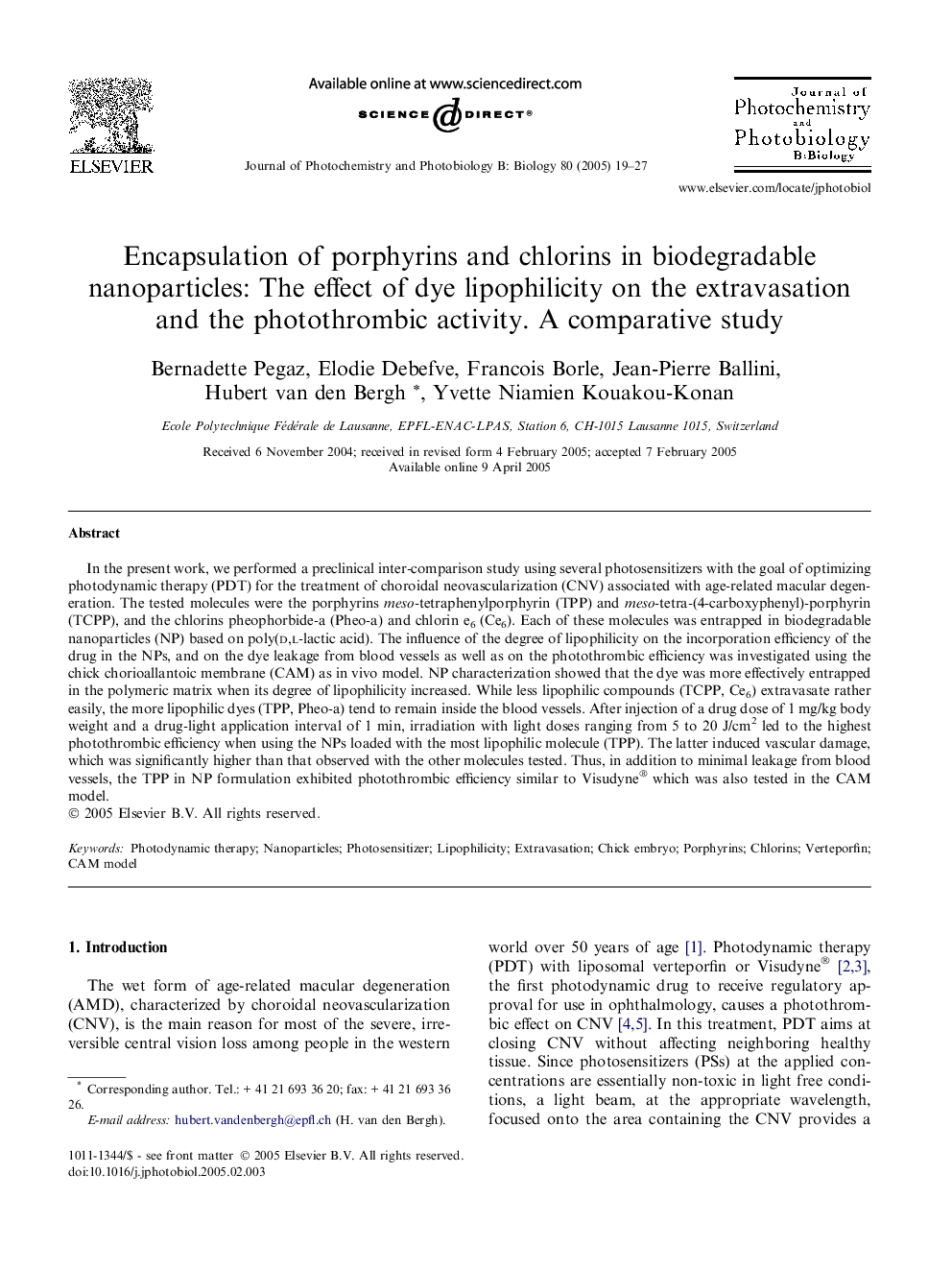| Article ID | Journal | Published Year | Pages | File Type |
|---|---|---|---|---|
| 9607038 | Journal of Photochemistry and Photobiology B: Biology | 2005 | 9 Pages |
Abstract
In the present work, we performed a preclinical inter-comparison study using several photosensitizers with the goal of optimizing photodynamic therapy (PDT) for the treatment of choroidal neovascularization (CNV) associated with age-related macular degeneration. The tested molecules were the porphyrins meso-tetraphenylporphyrin (TPP) and meso-tetra-(4-carboxyphenyl)-porphyrin (TCPP), and the chlorins pheophorbide-a (Pheo-a) and chlorin e6 (Ce6). Each of these molecules was entrapped in biodegradable nanoparticles (NP) based on poly(d,l-lactic acid). The influence of the degree of lipophilicity on the incorporation efficiency of the drug in the NPs, and on the dye leakage from blood vessels as well as on the photothrombic efficiency was investigated using the chick chorioallantoic membrane (CAM) as in vivo model. NP characterization showed that the dye was more effectively entrapped in the polymeric matrix when its degree of lipophilicity increased. While less lipophilic compounds (TCPP, Ce6) extravasate rather easily, the more lipophilic dyes (TPP, Pheo-a) tend to remain inside the blood vessels. After injection of a drug dose of 1 mg/kg body weight and a drug-light application interval of 1 min, irradiation with light doses ranging from 5 to 20 J/cm2 led to the highest photothrombic efficiency when using the NPs loaded with the most lipophilic molecule (TPP). The latter induced vascular damage, which was significantly higher than that observed with the other molecules tested. Thus, in addition to minimal leakage from blood vessels, the TPP in NP formulation exhibited photothrombic efficiency similar to Visudyne® which was also tested in the CAM model.
Keywords
Related Topics
Physical Sciences and Engineering
Chemical Engineering
Bioengineering
Authors
Bernadette Pegaz, Elodie Debefve, Francois Borle, Jean-Pierre Ballini, Hubert van den Bergh, Yvette Niamien Kouakou-Konan,
